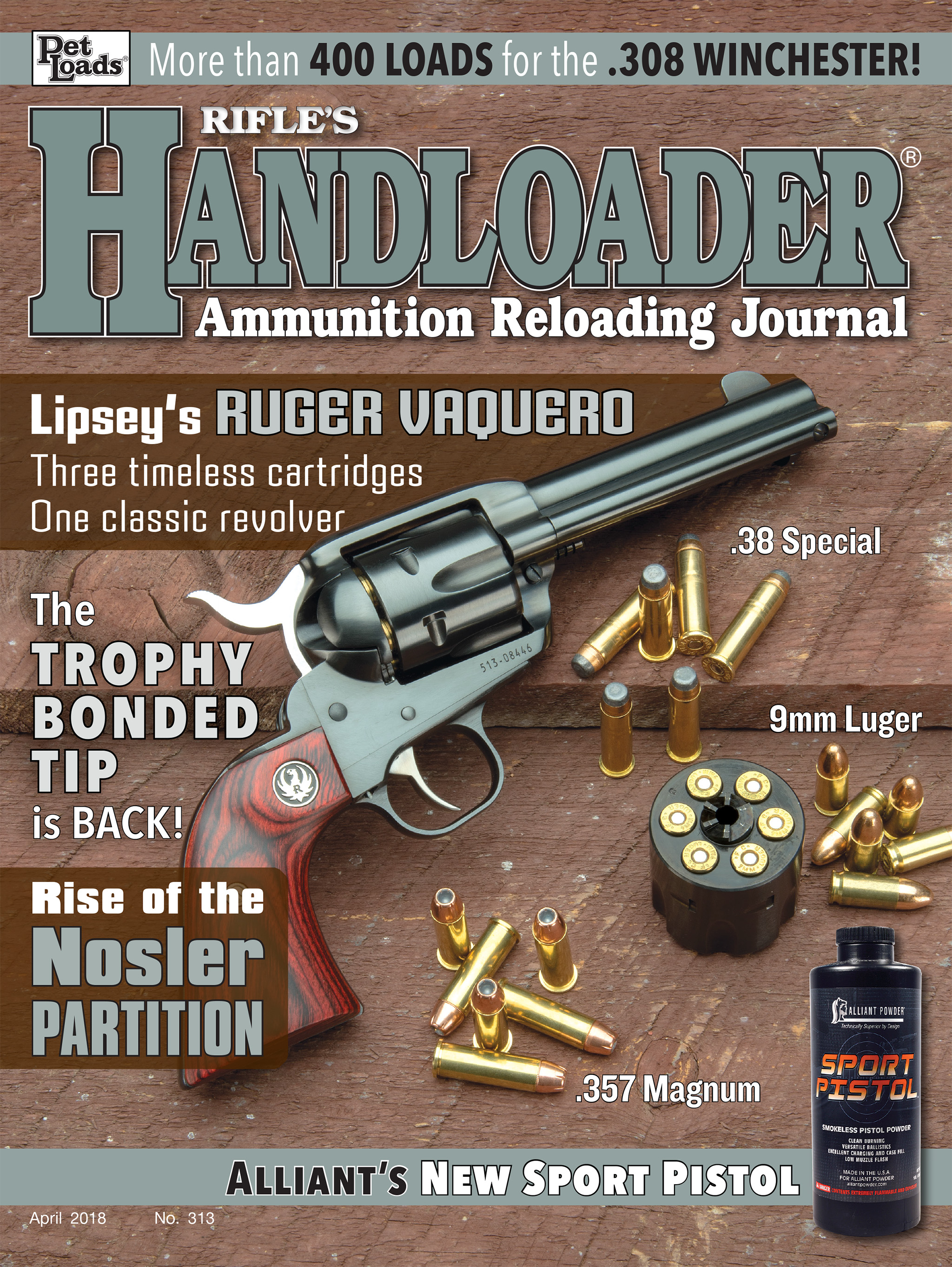Practical Handloading
Herter's Wasp Waist Bullets
column By: Rick Jamison |
Some readers may remember George Leonard Herter who, in 1937, turned his father’s dry goods business into a mail order hunting and fishing catalog outlet and later added retail stores. It could be said his business was the forerunner to Cabela’s or Bass Pro Shops.
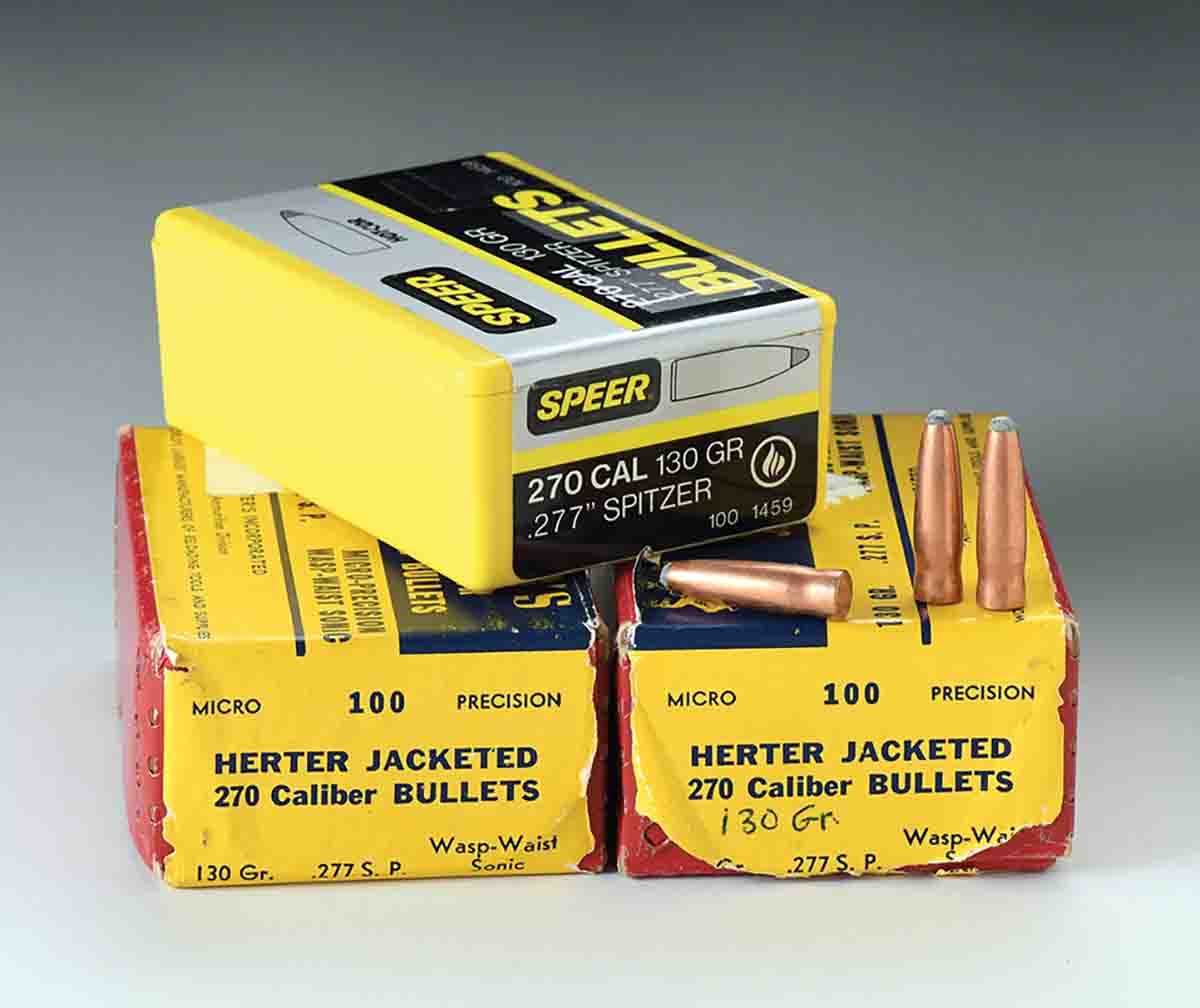
Herter’s published a thick catalog with all sorts of items and information, and its prices were nearly always less than competitors. The company had a long success until declaring bankruptcy in 1981. While operating, Herter’s sold handloading equipment and components, and I eagerly awaited each of the company’s catalogs when I was beginning to handload in the late 1950s. All its products were touted as the best and were sometimes labeled “Model Perfect.”
One of Herter’s offerings was a “Micro Precision Wasp Waist Sonic” rifle bullet produced in several diameters from .224 inch through .308 inch. It is a flatbase, semispitzer projectile with a basic cup jacket and lead-core design. The bullet is unusual in appearance in that it has a bearing surface fore and aft that tapers to a smaller diameter midsection, hence the name “Wasp Waist.” Herter’s also offered a Wasp Waist Sonic Missle Tail of a similar design but with a boat-tail. The main feature of these bullets is a reduced bearing surface because the midsection does not contact a rifle’s bore.
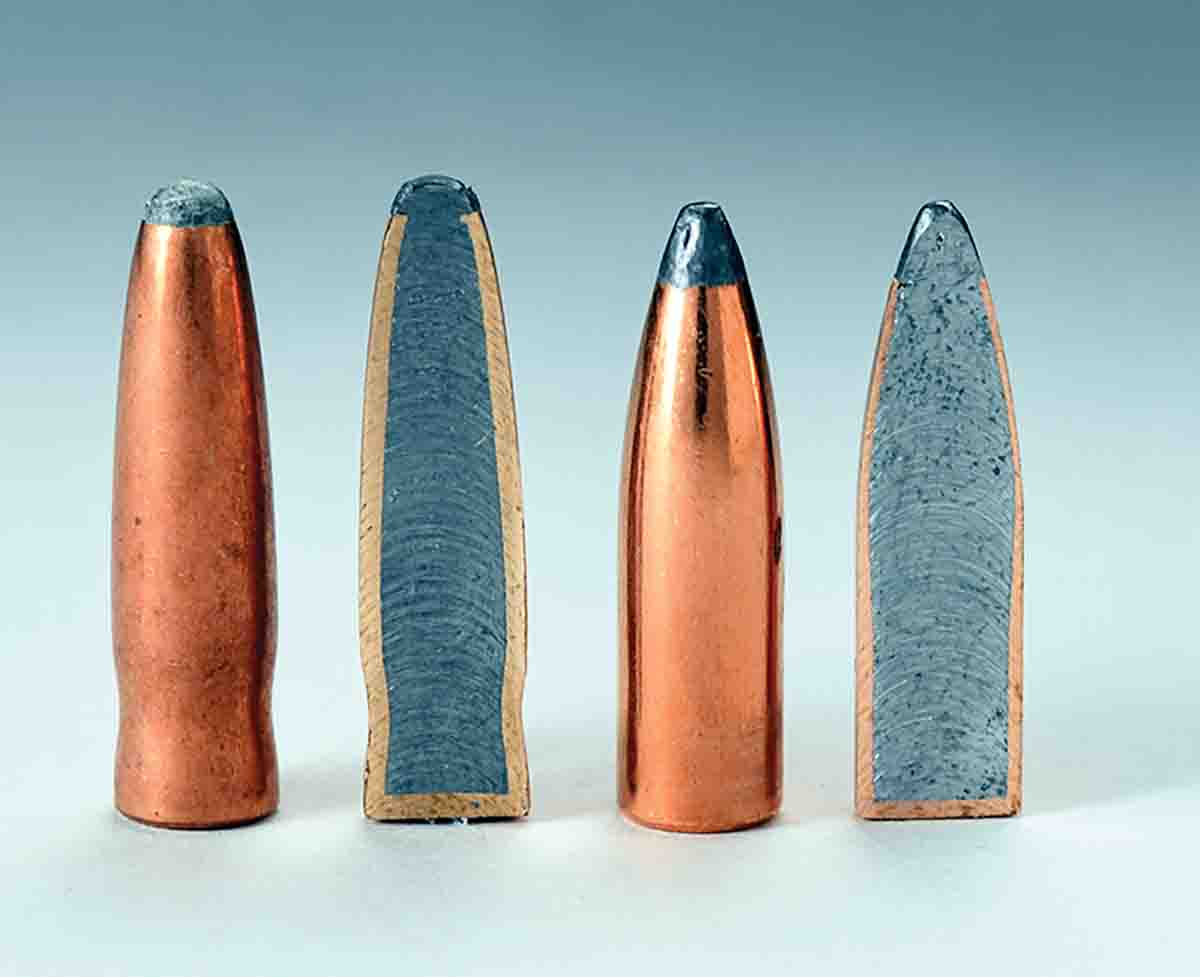
Herter’s was known to exaggerate, but this unusual Wasp Waist design is intriguing. I recently found 200 of these bullets in .27-caliber, 130-grain flatbase configuration at a gun show and could not resist buying them just to see how they measured up.
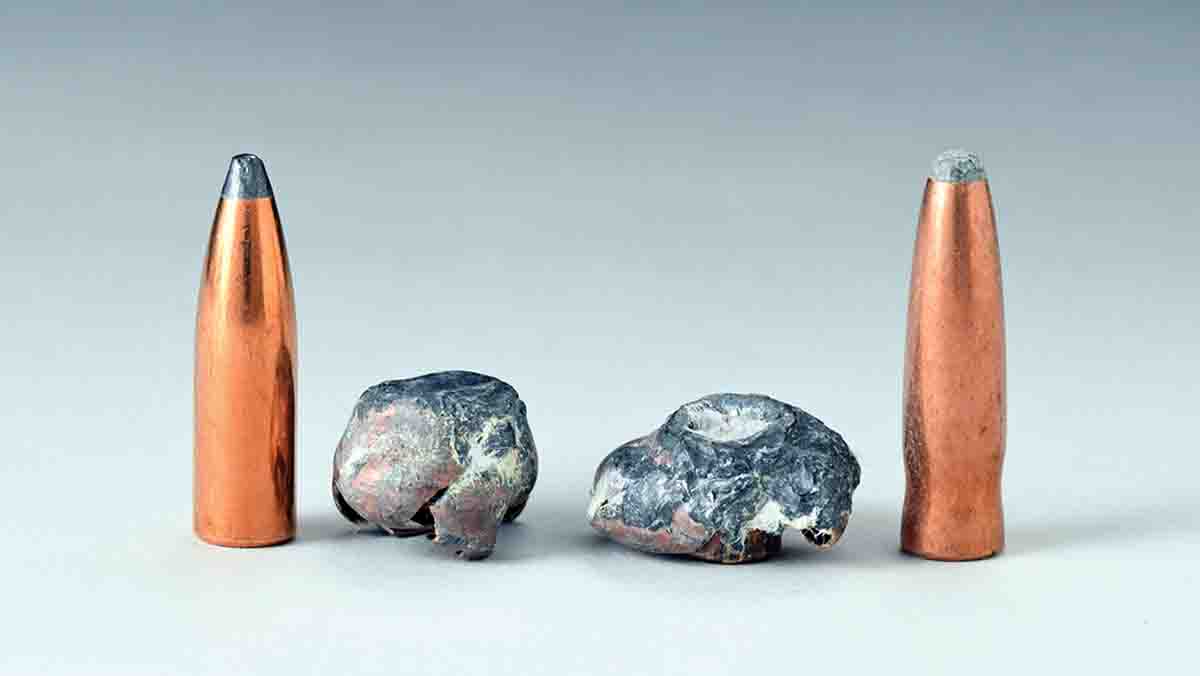
The first thing I did was weigh and measure the bullets. Ten 130- grain bullets weighed from 129.0 to 130.6 grains. The average was 129.7 grains. All diameters fore and aft of the “waist” were .277 inch. At the smallest part of the midsection, diameters varied from .252 inch to .257 inch with an average of .255 inch.
My plan was to load and shoot the bullets from a Wiseman .270 Winchester 24-inch test barrel in a machine rest and use Oehler Model 43PBL equipment so that I could check pressure, velocity and ballistic coefficient simultaneously with group size. I decided to fire them alongside a Speer 130-grain spitzer for a baseline comparison.
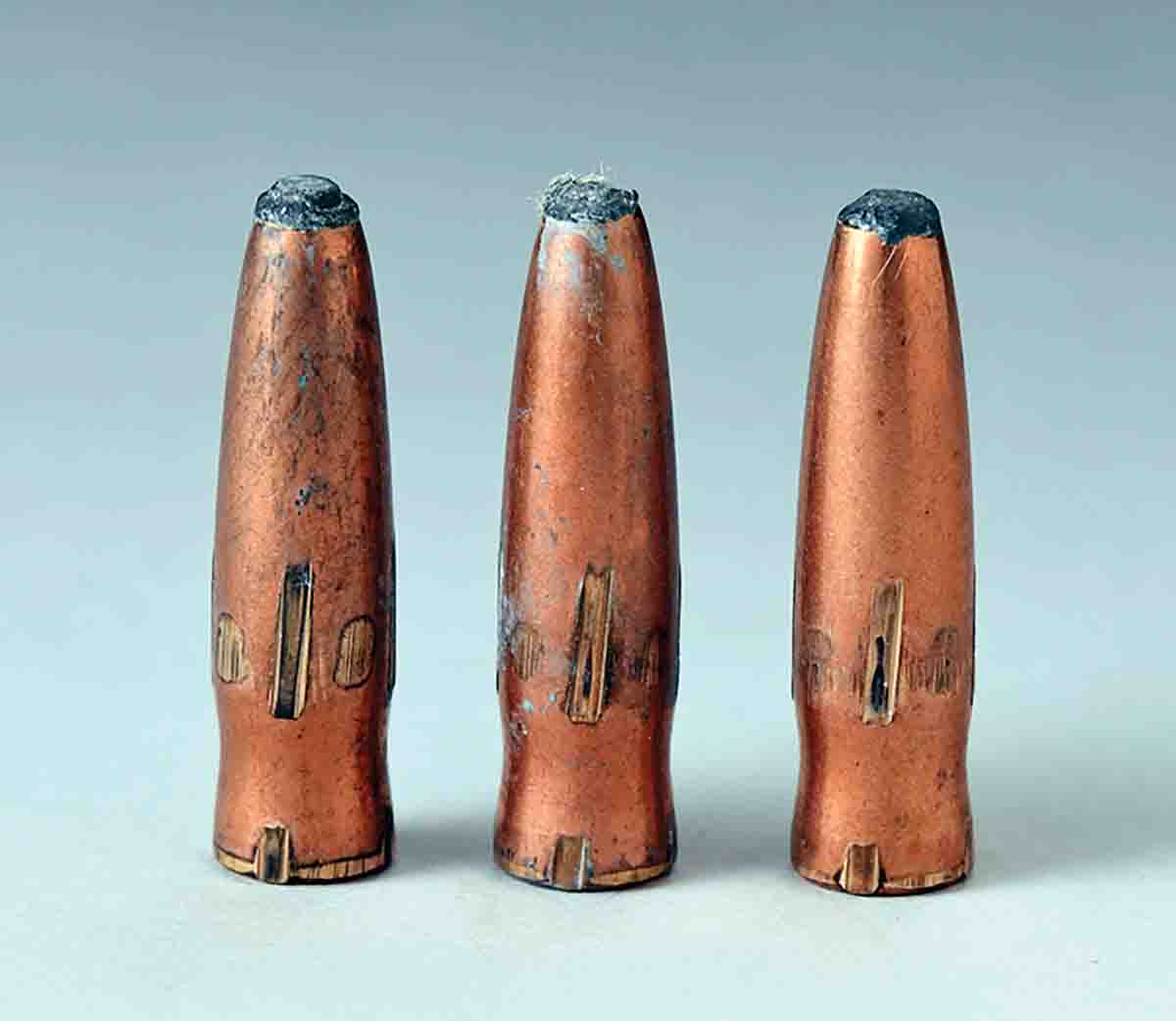
Teaming 55.5 grains of IMR-4831 in a Federal case with a Federal 210 primer, the Speer 130-grain spitzer flatbase produced an average of 64,400 pounds per square inch (psi) chamber pressure and 3,117 fps muzzle velocity. Maximum average pressure for the .270 Winchester cartridge is 65,000 psi. The 10-shot group measured an excellent 1.1 inches.
The same load and a 3.195 inch overall cartridge length with the 130 Herter’s Wasp Waist bullet produced only 53,300 psi with a velocity of 3,048 fps. The chamber pressure was 10,100 psi less with the Wasp Waist bullet using the same powder charge, but the velocity was only 69 fps less. At this time I thought that perhaps Herter might have been on to something. The 10-shot string with the Wasp Waist bullet measured 3.8 inches.
Next, I decided to work up to a higher pressure with the Herter’s bullet that was more on par with the pressure developed from the Speer, just to see what velocity would be at approximately the same pressure level. Loading 62.0 grains of IMR-4831 (Note: This charge weight is over-maximum with most bullets. I had the benefit of pressure-measuring equipment. Do not use this load.) produced an average 63,800 psi (600 psi less than the Speer) with the Herter’s bullet accompanied by an astonishing 3,294 fps (177 fps more than the Speer)! Admittedly, it took 7.5 grains more powder to do it, but the chamber pressure was virtually the same. Pressure and velocity variation in the 10-shot strings were also significantly less with the Wasp Waist bullet.
Again, however, the shot dispersion on target was not good. It measured 4.9 inches for the Herter’s bullet using this second, higher-pressure load. The G1 ballistic coefficient (BC) over 100 yards averaged 15 percent less for the Herter’s bullet.
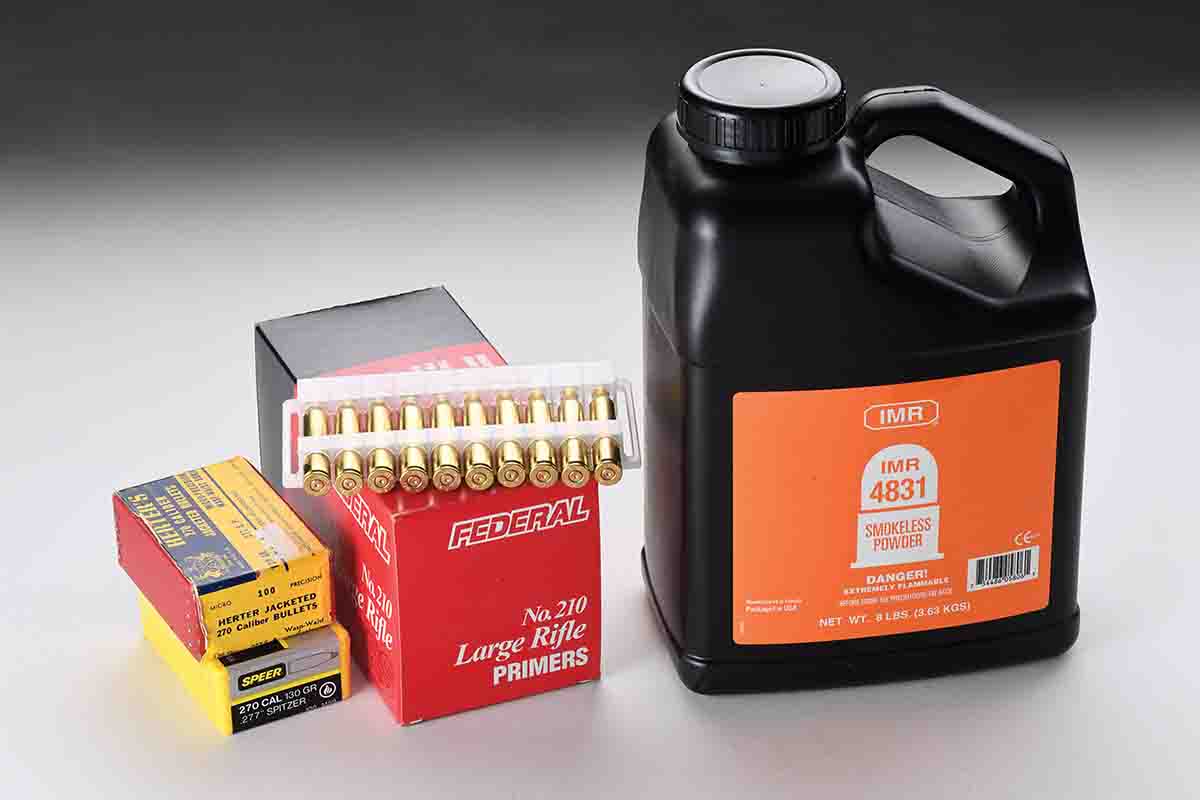
Both the Speer and Herter’s bullets were then fired into wet newspapers at 10 feet to see how expansion compared. The higher velocity load for the Herter’s bullet was used for this test. Both bullets penetrated 12 inches into the medium, and neither of the bullet’s cores were loosened from jackets. The Speer bullet retained 79.2 grains of weight while the Herter’s bullet retained 91.5 grains. Frontal diameter for the recovered Speer was about .600 inch, and for the Herter’s, .675 inch. It pointed to good terminal performance for the Herter’s bullet.
The Herter’s bullet was then fired at a reduced velocity of 996 fps to recover them from the newspapers unexpanded in order to illustrate the bore and groove bearing surface on the projectile.
The result of all this shooting is that the Herter’s Wasp Waist bullet came up well on all counts except two: accuracy, and shape for BC. In this test, the group sizes for the Herter’s bullet were poor. It is a fact that accuracy is variable and can change with rifles and many other factors. I then checked a number of shooting forums on the Internet to read comments from others on the performance of the Wasp Waist bullets and stopped at 16. Their comments ranged from “near match accuracy” to “they don’t shoot worth a hoot.” To sum up, there were nine negative responses and seven positive remarks.
The semipointed shape of the Herter’s bullet does not produce a high ballistic coefficient by today’s standards; it was 15 percent poorer than the Speer flatbase spitzer. If the accuracy issue could be overcome and the shape improved, the reduced full diameter section of the Wasp Waist design does offer a decided advantage in the pressure/velocity arena, producing lower pressure and greater uniformity with a given powder charge and without a significant velocity loss.


